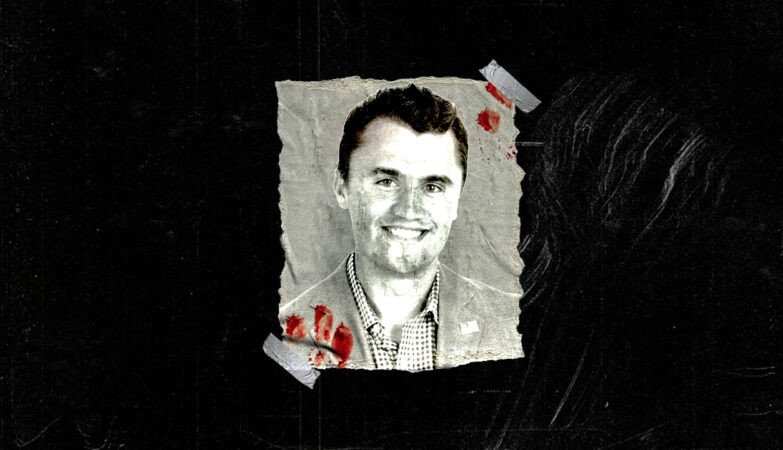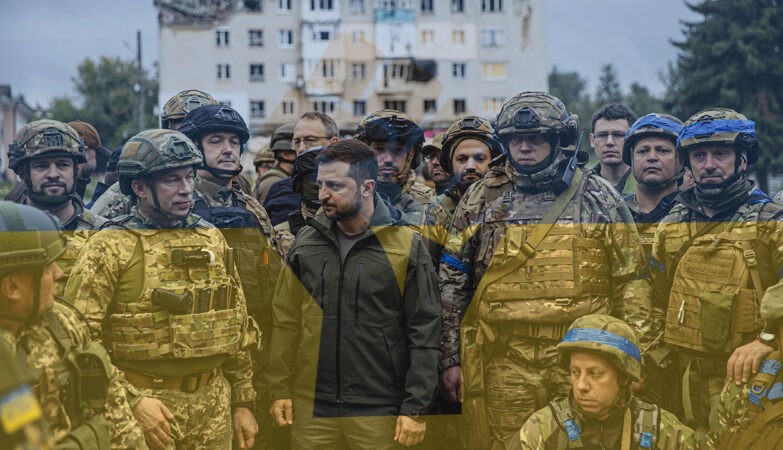Funny things always happen to Bill and Hillary Clinton. Their friends have this nasty habit of turning up dead. We all gotta go sometimes, but the Clinton’s buddies sure do seem to go under strange and suspicious circumstances (many by suicide).
I have compiled a list and description of Clinton associates whose deaths seemed a bit odd.
James McDougal
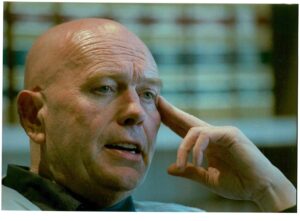
McDougal was a convicted Whitewater partner of the Clintons who died of an apparent heart attack, while in solitary confinement. He was a key witness in the investigation of Special Prosecutor Ken Starr.
The Baltimore Sun’s Carl M. Cannon wrote on March 9,1998:
James B. McDougal, a former Clinton business partner who had been cooperating with independent counsel Kenneth W. Starr in the Whitewater investigation, died yesterday in a federal prison hospital in Texas. He was 58.
McDougal was serving a 3 1/2 -year sentence after Starr’s office successfully prosecuted him on fraud charges stemming from the collapse of Madison Guaranty Savings & Loan, a McDougal-owned Arkansas thrift that cost taxpayers $60 million when it failed.
His death appears to reduce the legal risks to President Clinton and Hillary Rodham Clinton, and was a clear setback to Starr and his prosecutors, who huddled in their offices last night after McDougal’s death was announced.
McDougal, who suffered from heart disease and blocked arteries, died of cardiac arrest, the Justice Department said. He had often predicted that his health wouldn’t hold out long enough for him ever to be free again.
At the White House, the president issued a statement referring to the early years of his friendship with McDougal.
“I am saddened to learn about Jim McDougal’s death today,” Clinton said. “I have good memories of the years we worked together in Arkansas, and I extend my condolences to his family.”
The key accusation against Clinton in the Whitewater land deal phase of Starr’s investigation centers on a claim by former municipal judge David Hale, who maintains Clinton urged him in 1986 to seek a fraudulent $300,0000 government-backed loan.
The money was never repaid, and prosecutors alleged that some of it was used to prop up the Whitewater Development Corp., a firm co-owned by McDougal, his then-wife, Susan, and the Clintons.
As noted by Star-Telegram staff writer Jack Douglas Jr. and WND:
When Jim McDougal was taken out of solitary, instead of attempting to defibrillate his heart with equipment on hand at the facility, he was driven over to John Peter Smith hospital. Not the closest hospital to the Fort Worth Federal Medical Center, John Peter Smith hospital is a welfare hospital, where (in the words of one local) ,”They let interns practice on deadbeats”.
John Jones

Approximately a month after Julian Assange, the founder of WikiLeaks, released a batch of incriminating Hillary Clinton emails, his reputable lawyer, John Jones, was found dead. Though authorities were quick to rule the lawyer’s death a suicide, WikiLeaks has countered that claim, stating it was foul play.
Jones was a top human rights lawyer who worked on the same team as Amal Clooney, wife of George Clooney. His specialty was extradition, war crimes, and counter-terrorism. Many of the cases he took concerned former Yugoslavia, Rwanda, Sierra Leone, Lebanon and Cambodia.
Mary Mahoney

Mahoney, a former White House intern was murdered in July 1997 at a Starbucks Coffee Shop in Georgetown, Washington, D. C., just after she was about to go public with her story of sexual harassment by then president Bill Clinton in the White House.
Reported by the Western Journalism Center:
White House intern Died July 1997 An attractive 25-year-old woman, Mahoney was a former White House intern for Bill Clinton working as the assistant manager at a Starbuck’s Coffee shop in Georgetown.
Gunmen entered the Starbuck’s while the crew was cleaning up after closing. Mahoney’s two associates, Aaron Goodrich, 18 and Emory Evans, 25, were taken to a room and shot.
Mary herself had five bullets in her, from at least two different guns, most likely with silencers. A total of 10 shots were fired; none of them heard by neighbors in the densely populated Georgetown section.
Mahoney was shot in the chest, her face, and in the back of the head.
Even though more than $4,000 remained in the store, the police have categorized the triple murder as a robbery, even as they acknowledge the “execution style” killings.
There was no sign of forced entry. One report said the cafe was still locked when the bodies were found the next morning. George Stephanopoulos, Monica Lewinsky and Chelsea Clinton were all regulars at the Starbuck’s.
Vince Foster

Foster was a White House Councilor and colleague of Hillary Clinton at the Little Rock Rose Law Firm where Clinton was a partner. He died of a gunshot wound to the head, which was ruled a suicide. (He was about to testify against Hillary about the records she refused to turn over to Congress.) He was reported to have been having an affair with Hillary.
The Daily Mail’s Sally Bedell Smith reported:
On a Monday night in July 1993, a 48-year-old lawyer called Vince Foster was found dead in a park near Washington DC.
He had died from a gunshot wound to the mouth and his father’s .38-calibre revolver, dating from 1913, was at his side.
It was the same method of suicide used by a Marine officer in the film A Few Good Men – which Foster was known recently to have watched.
In the movie, the officer had killed himself because he was distraught about testifying against his commanding officer.
In real life, Vince Foster was distraught at the prospect of being grilled about the shady affairs of Hillary Clinton.
A clear case of suicide, then. Or was it? As the months passed, wild rumours began to grow that a hitman had murdered him because he knew too much.
Tall and handsome, Vince Foster was one of Hillary’s closest colleagues and best friends.
Ron Brown

Brown was the Secretary of Commerce under Clinton and the former DNC Chairman. He was reported to have died by impact in a plane crash. A pathologist close to the investigation reported that there was a hole in the top of Brown’s skull resembling a gunshot wound.
At the time of his death Brown was being investigated, and spoke publicly of his willingness to cut a deal with prosecutors. The rest of the people on the plane also died. A few days later the Air Traffic controller committed suicide.
Jack Cashill wrote:
When I first heard of the Ron Brown plane crash in 1996, I presumed it was just that – a crash, an accident. It was not until the revelation of the hole in Brown’s head in late 1997 that I began to question the simplicity of the earlier explanation.
In exploring Ron Brown’s life, however, I came to see just how desperate were his circumstances, especially at the end. I also came to see how deeply – and willfully – flawed was the investigation into his death.
What finally convinced me that talk of “murder” was not irresponsible was the official 22-volume Air Force report. To secure it, I had to go through the Freedom of Information Act.
Contained deep within the report are some astonishing revelations, none of which had ever been revealed in the media.
The Air Force report also revealed the Enron connection. Even if the plane crash were accidental, Brown and 34 others died for no higher purpose than to secure a sweetheart deal between a fascist dictator and a notoriously corrupt American company.
This was the “very important challenge of his time” that inspired President Clinton to compare Brown to Martin Luther King. Again, there is much more than can be revealed here.
In the book, the reader can explore the evidence as to who benefited from Brown’s death and, if he were murdered, who might have executed him and how.

C. Victor Raiser II
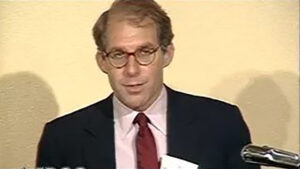
Raiser, a major player in the Clinton fundraising organization, died in a private plane crash in July 1992.
As reported in the Chicago Tribune:
C. Victor Raiser II, finance co-chairman of Gov. Bill Clinton`s presidential campaign, was killed Thursday when a small plane carrying him on a fishing vacation crashed in Alaska. He was 52 and lived in Washington.
The aircraft, a De Havilland Beaver floatplane, went down near the town of Dillingham, 300 miles southwest of Anchorage, killing Mr. Raiser and his 22-year-old son, R. Montgomery Raiser, along with three other passengers. A sixth passenger and the pilot were injured.
The New York Times wrote:
C. Victor Raiser 2d, finance co-chairman of Gov. Bill Clinton’s Presidential campaign, was killed Thursday when a small plane carrying him on a fishing vacation crashed in Alaska. He was 52 years old and lived in Washington.
The aircraft, a de Havilland Beaver floatplane, went down near the town of Dillingham, 300 miles southwest of Anchorage, killing Mr. Raiser as well as his 22-year-old son, R. Montgomery Raiser, and three other passengers. A sixth passenger and the pilot were injured.
Mr. Raiser (pronounced RAY-zer), a lawyer, business executive and former finance chairman of the Democratic National Committee, was the Clinton campaign’s finance chairman for the Middle Atlantic States and one of its 12 national finance co-chairmen. On learning Friday of his death, the campaign’s press secretary, Dee Dee Myers, described him as “a major player” in the Clinton organization.
Mr. Raiser was born in Indianapolis and earned a bachelor’s degree from Princeton University in 1962 and a law degree from the University of Virginia in 1965.
Paul Tulley
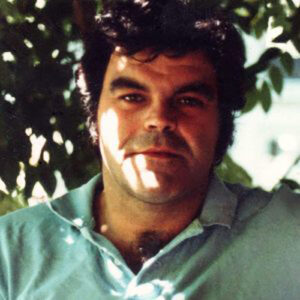
Tulley was the Democratic National Committee Political Director who was found dead in a hotel room in Little Rock, Ark., on September 1992. He was described by Clinton as a “dear friend and trusted advisor.”
The New York Times wrote:
Paul Tully, the political director of the Democratic National Committee and one of his party’s pre-eminent strategists, was found dead in Little Rock, Ark., today. He was 48 years old.
Coroner Steve Nawojczyk of Pulaski County said Mr. Tully’s body was found about 3 P.M. today by a maid at the hotel where he was living in Little Rock. Pending results of an autopsy, the coroner said Mr. Tully appeared to have died of natural causes.
Mr. Tully was among the most impassioned and intense of a generation of Democratic political professionals who devoted much of their lives to regaining the White House. He worked in every Presidential election since 1968.
He had moved to Little Rock this fall to aid in Gov. Bill Clinton’s drive for the White House. Ronald H. Brown, the chairman of the Democratic National Committee, said in a statement tonight: “There will be only one Paul Tully. Pacing, driven, and full of joy, Paul’s commitment to our party and, more importantly, to making this great nation even greater was a fire that burned bright and long.”
Ed Willey

Willey, a Clinton fundraiser, was found dead in November 1993, deep in the woods of Virginia with a gunshot wound to the head, which was ruled a suicide. Willey’s wife Kathleen, claimed that Bill Clinton groped her in the Oval Office of the White House.
Willey’s wife, Kathleen asserted in an interview:
In a new book alleging a campaign of slander and intimidation orchestrated chiefly by Hillary Clinton, Kathleen Willey points a finger of suspicion at the former first couple for the death of her husband, who was believed to have killed himself.
Willey, who claims she was groped by President Clinton in the White House, acknowledged in an interview with WND today that she stands by the speculation she poses about her husband’s demise in “Target: Caught in the Crosshairs of Bill and Hillary Clinton.
Asked if she suspects her husband Ed, a lawyer and son of a prominent Virginia lawmaker, was murdered, Willey replied, “Most definitely.”
“I’m having someone with a forensics background look at this, and I intend to pursue this further, now that these questions have been raised,” she told WND, pointing to alleged discrepancies in the autopsy report.
Does she believe the Clintons were involved?
“I do have suspicions,” Willey said, “yes.”
Jerry Parks
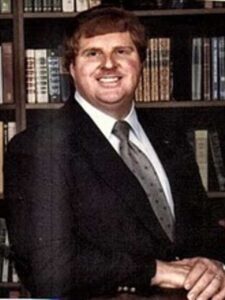
Parks was the head of Clinton’s gubernatorial security team in Little Rock, Ark. He was gunned down in his car at a deserted intersection outside of Little Rock. Park’s son said his father was compiling a dossier on Clinton and allegedly threatened to reveal the information he found. After he died, the files were mysteriously removed from his house.
KATV Channel 7 reports:
It’s a tragic story with many twists and turns that leaves a Little Rock woman with little information about her father’s murder.
“Shortly before 7:00 Sunday night, police found the bullet-riddled body of a middle-aged Roland man lying outside his car near the intersection of Chenal Parkway and Highway 10 in west Little Rock,” Channel 7’s Geoff Morrell reported in a KATV news broadcast on September 26, 1993.
It was a day that Denise Hickman can recall like it was yesterday.
“I remember getting a phone call from my dad’s widow saying that my father had been hurt. And I asked her what happened and she told me that he was dead. And then I just dropped the phone,” said Hickman.
Someone in a white Chevy pulled up to Jerry Parks car and just started shooting.
“The occupant of the Chevrolet then fired approximately ten shots based upon the evidence we found at the scene,” said Doc Holladay in 1993, back then as a spokesperson for the Little Rock Police Department.
Hickman’s dad was a private investigator and owner of a security company. He would have been turning 67 years old July 3. She was 26 when he was murdered.
Read this 1997 account of events by Ambrose Evans-Pritchard:
“I’M A DEAD MAN,” whispered Jerry Parks, pale with shock, as he looked up at the television screen. It was a news bulletin on the local station in Little Rock. Vincent Foster, a childhood friend of the President, had been found dead in a park outside Washington. Apparent suicide.
He never explained to his son Gary what he meant by that remark, but for the next two months the beefy 6′ 3″ security executive was in a state of permanent fear. He would pack a pistol to fetch the mail. On the way to his offices at American Contract Services in Little Rock he would double back or take strange routes to “dry-clean” the cars that he thought were following him.
At night he kept tearing anxiously at his eyebrows, and raiding the valium pills of his wife, Jane, who was battling multiple sclerosis. Once he muttered darkly that Bill Clinton’s people were “cleaning house,” and he was “next on the list.”
Two months later, in September 1993, Jerry and Jane went on a Caribbean cruise. He seemed calmer. At one of the islands he went to take care of some business at a bank. She believed it was Grand Cayman. They returned to their home in the rural suburbs of Little Rock on September 25. The next day Jane was in one of her “down” periods, so Jerry went off on his own for the regular Sunday afternoon supper at El Chico Mexican Restaurant.
On the way back, at about 6:30 PM, a white Chevrolet Caprice pulled up beside him on the Chenal Parkway. Before Parks had time to reach for his .38 caliber “detective special” that he kept tucked between the seats, an assassin let off a volley of semi-automatic fire into his hulking 320 pound frame.
Parks skidded to a halt in the intersection of Highway 10. The stocky middle-aged killer jumped out and finished him off with a 9 mm handgun–two more shots into the chest at point blank range. Several witnesses watched with astonishment as the nonchalant gunman joined his accomplice in the waiting car and sped away.
It was another three months before news of the murder of Jerry Luther Parks reached me in Washington. The U.S. national media were largely unaware of the story, which surprised me because Parks had been in charge of security at the 1992 Clinton-Gore campaign headquarters in Little Rock.
John Ashe
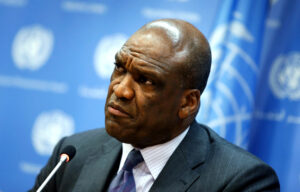
Ashe, 61, a politician and former president of the United Nations General Assembly, was pumping iron at his home in Dobbs Ferry, New York on June 22 when he dropped the weight. He died from ‘traumatic asphyxiation’. Ashe was about to stand trial in a corruption case for allegedly receiving $500,000 from billionaire real estate developer Ng Lap Seng.
Ng was involved in a fundraising scandal and named in a 1998 Senate report for illegally funneling hundreds of thousands of dollars to the DNC during Bill Clinton’s presidency. ‘During the trial, the prosecutors would have linked Ashe to the Clinton bagman Ng. It would have been very embarrassing. His death was conveniently timed,’ The New York Post reported.
James Bunch
Bunch was an influential Texan who died from an apparent suicide by gunshot. It was reported that he had a “Black Book” of people containing the names of influential people who visited prostitutes in Texas and Arkansas.
Shawn Lucas
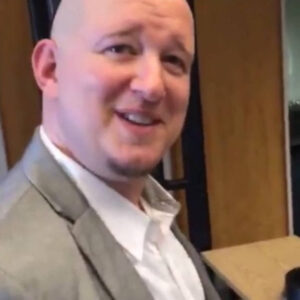
Lucas, 38, a lawyer who supported Bernie Sanders, was found dead on August 2 on the bathroom floor of his Washington DC apartment. Just a month earlier he had attempted to serve papers on Wasserman-Schultz in a fraud case that alleges the party had unfairly favored Hillary Clinton in the primaries over Sanders.
A video of Lucas taking the papers to the DNC’s Washington headquarters has been viewed almost 400,000 times as of Wednesday morning on YouTube. In it, Lucas, who was said to have been a Sanders supporter and worked for a company called One Source Process, calls serving the papers ‘the most gratifying thing I have ever done.’ Lucas’s mother Susan told Daily Mail Online the family is currently awaiting results of an autopsy and she does not know why her son died.
‘He was a young man — 38. He was in good health,’ she said. ‘But these things happen when people in seemingly good health suddenly die.
The list of deaths associated with people who had worked with Clinton was originally drawn up by right-wing radio personality Linda Thompson. She too died early in May 2009. She was 56 when she took an overdose of medication prescribed for a gastric bypass surgery she had had more than a decade earlier.
John Wilson
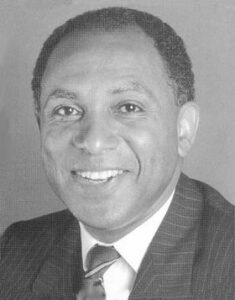
Wilson was found dead in May 1993 from an apparent suicide by hanging. He was reported to have ties to the Clintons’ Whitewater deals.
As written by the Washington City Paper:
On May 19, 1993, the D.C. government lost one of its early Home Rule-era leaders and most accomplished legislators. D.C. Council Chairman John A. Wilson was found dead in the basement laundry room of his Southwest home by his wife, Bonnie, and chauffeur.
His death, ruled a suicide by the Metropolitan Police Department, sent shock waves through the D.C. political scene, of which Wilson was a 20-year veteran. The longtime Ward 2 council member, who assumed the council chairmanship in 1991, was known for his own brand of brazen politics.
Each of these deaths seem to have had a cloud of mystery surrounding the event. In some cases, the victims were shot execution style, with firearms fitted with suppressors.
The public should be asking how common is it that a couple, such as Bill and Hillary, happen to know 47 people who died violent and mystery-shrouded deaths?
Kathy Ferguson

The ex-wife of Arkansas Trooper Danny Ferguson, 38-year-old Kathy Ferguson, was found dead in May 1994, in her living room with a gunshot to her right temple. It was ruled a suicide even though there were several packed suitcases as if she was about to go somewhere.
Ferguson was a hospital worker, and her death came a mere 5 days after the death of her ex-husband’s.
Danny Ferguson was a co-defendant along with Bill Clinton in the Paula Jones lawsuit, and Kathy Ferguson was a possible corroborating witness for Paula Jones.
The Los Angeles Times reported:
The ex-wife of a state trooper who is a co-defendant in a sexual harassment lawsuit against President Clinton died in an apparent suicide.Kathy Ferguson, 37, was found dead of a gunshot wound to the right temple early Wednesday at the home of her boyfriend, said Mark Malcolm, chief deputy coroner for Pulaski County.
Bill Shelton

Shelton, an Arkansas State Trooper, was the fiancée of Kathy Ferguson. He criticized the suicide ruling of his fiancée and was found dead in Sherwood, Arkansas, on June 12th, 1994, of a gunshot wound, sprawled on the gravesite of his fiancée.
The police report indicated that the fatal shot entry point was behind the right ear, and the exit point was behind the left ear. Also, first accounts showed that Trooper Ferguson left a note (found next to his body) stating, “I can’t stand it anymore.” The local police chief says, “It puts big questions in your mind. Why?”
Gandy Baugh
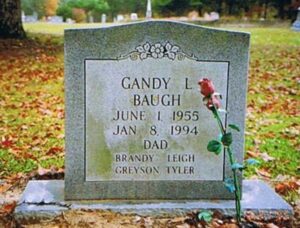
Baugh was the attorney for Bill Clinton‘s friend (and drug distributor), Dan R. Lasater. Baugh died by allegedly jumping out the window of a tall building in January 1994. His law partner allegedly committed suicide one month later.
The Los Angeles Times writes of his client, Dan R. Lasater:
Dan R. Lasater, an Arkansas friend and fund-raiser who has proved an embarrassment to President Clinton, did his best Wednesday to make up for past wrongs in an appearance before the Senate Whitewater Committee.
Lasater, a convicted cocaine user and distributor, freely acknowledged that he had lobbied Clinton as governor and had contributed to his state campaigns in an effort to win business for his bond underwriting business.
Florence Martin
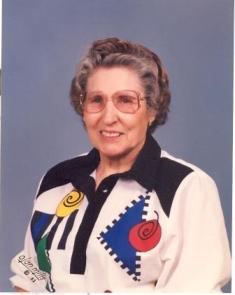
Martin was an accountant subcontractor for the CIA and died October 23rd, 1994. Of note: Martin supposedly had knowledge of the Barry Seal, Mena Arkansas Airport drug smuggling case. Seal died of three gunshot wounds.
Once again, several reports indicated that Florence Martin, at the time of her death, had the account and PIN numbers for a Fuji bank account in the Cayman Islands in the name of Barry Seal which held 1.4 million dollars. Immediately following her death, the money was moved to the Virgin Islands.
Suzanne Coleman
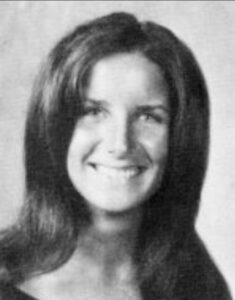
Coleman reportedly had an affair with Bill Clinton when he was the Arkansas Attorney General. She died of a gunshot wound to the back of the head, which was ruled a suicide. She was pregnant at the time of her death.
Joe Montano
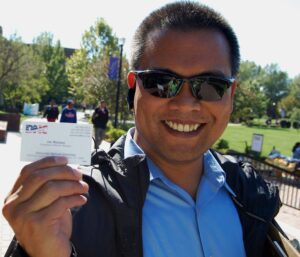
Montano, a former DNC Chairman with in-depth knowledge of Hillary Clinton’s campaign, has also been named as on the unofficial list after he died from what authorities say was a heart attack on July 25 – the day the DNC started.
Paula Grober
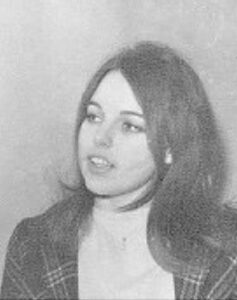
Grober was Bill Clinton ‘s speech interpreter for the deaf from 1978 until her death on December 1992. She died in a one-car accident with no known witnesses. Her body was thrown 33 feet from the car, indicating a very high speed.
Said to be a beautiful woman, Grober traveled extensively with Clinton from 1978 until her death. Clinton, through a spokesman, called Gober’s death “a great personal loss.” He also said, “Hillary and I extend our sincere sympathy to Paula’s family. I had the privilege of working with her over many years.”
Danny Casolaro
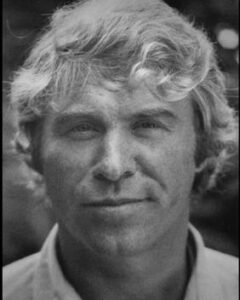
Casolaro was an investigative reporter who was looking into the Mena Airport and Arkansas Development Finance Authority. He slit his wrists, apparently, in the middle of his investigation.
Casolaro’s body was found on August 10, 1991, in a blood-filled bathtub by a hotel maid who called the Martinsburg, West Virginia, police. The body contained three deep cuts on the right wrist and seven on the left wrist, made by a single edge razor blade.
A freelance writer who was found dead with his wrists slashed in a hotel room in Martinsburg, W.Va., a week ago was buried near here today amid uncertainty about the cause of death and evidence that he was working on an article about a major Government conspiracy.
The body of Joseph Daniel Casolaro, 44 years old of Fairfax City, Va., was discovered by West Virginia authorities on Saturday in what was tentatively ruled a suicide.Mr. Casolaro’s family and friends said he had told them he was going to Martinsburg to meet a source for the story he had been working on for more than a year.
The case has been in the courts for nearly a decade and Mr. Casolaro’s brother, Dr. Anthony Casolaro of Arlington, Va., has told reporters he believed his brother may have been close to uncovering a major conspiracy in connection with the Inslaw case. He said in an interview today that his brother had told him in the last two months that if he died in an accident, “don’t believe it.”
Dr. Casolaro said he was very skeptical that his brother committed suicide for several reasons, including the facts that his brother had recently received numerous death threats and that none of his notes on the case were found with his body. A finding of suicide was made by Dr. James Frost, West Virginia’s deputy medical examiner, but he said he could not rule out foul play.
Paul Wilcher
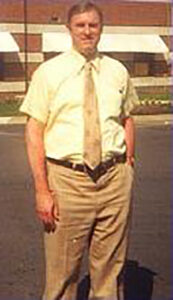
Wilcher was the attorney investigating the raid on the Branch Davidian compound in Waco, Texas. He was found dead on a toilet on June 22, 1993, in his Washington, D.C. apartment. He had delivered an extensive affidavit with eye-witness testimony on the Waco events to Janet Reno on May 21, 1993.
In his report to Attorney General Reno, Wilcher said that he was in grave danger and that if the information he had for the Attorney General fell into the wrong hands, there could be people “silenced in the very near future.”
Though unable to collaborate, it was reported Wilcher was working with Danny Casolaro on the Mena, Arkansas investigation.
Jon Parnell Walker
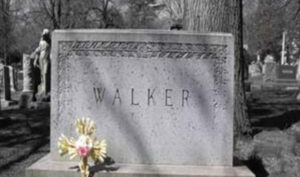
Walker was one of the Whitewater investigators who worked for Resolution Trust Corp. He allegedly jumped to his death from his Arlington, Virginia apartment balcony on August 15, 1993. He was investigating the Morgan Guaranty (Whitewater) scandal.
Barbara Wise
Wise died on November 29, 1996. Wise was a close associate of Ron Brown and John Huang and was discovered dead in her locked office on the fourth floor of the Department of Commerce. She was partially nude and had sustained contusions throughout her body.
The Associated Press report:
WASHINGTON (AP) — A Commerce Department employee was found dead in her fourth-floor office at the agency’s downtown headquarters on Friday.
The body was discovered around 7:45 a.m. by a co-worker arriving for work, police said.
The woman was identified as Barbara Alice Wise, 48, of Gambrills, Md. She had worked as a secretary for 14 years at the department’s International Trade Administration.
Anne Luzzatto, the chief spokeswoman for Commerce Secretary Mickey Kantor, said the unit where she worked provided analysis for various industries in studies designed to boost export sales.
The woman had been last seen alive at Commerce late Wednesday afternoon before the agency closed for the Thanksgiving holiday.
Sgt. Michael Farish, a homicide investigator with District of Columbia police, said officers have found no signs of foul play and believe that she died of natural causes. But the case continued to be investigated as a homicide, he said.
A preliminary autopsy was unable to determine the cause of death Friday.
A local television station, WRC, quoted unidentified police sources as saying that the office where the body was found was locked and the body was partially nude.
After her body was discovered, Bill Clinton made an impromptu flight back to the White House from Camp David.
This crime has never been solved.
While all these elite wonks and writers scurry to anoint Hill and pen the fait accompli, I would like to continue my quest to inform Americans, to remind us what’s behind the celebrated veneer of Ms. Clinton.
As for the rest of her questionable life story? Well, that’s where new media can pick up the brush and paint in the rest of the picture.
Hillary and Bill Clinton are pursuing their goal for ever more power with the relentless abandon and iron will of an Olympic athlete. But unlike the Olympic sporting amateurs, Hill and Bill are pros: they seem to get what they want, no matter the cost.
Use common sense. Use the science of probability. And ask yourself how likely is it that an average person would have this number of folks, in their close circle of acquaintance, die mysteriously or be the victim of a hit-style murder.
You decide.
Victor Thorn
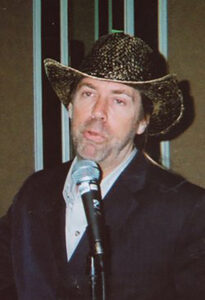
You might know Thorn from his books about the Clintons: “Hillary (and Bill): The Sex Volume,” Hillary (and Bill): The Drugs Volume,” “Hillary (and Bill): The Murder Volume” and “Crowning Clinton: Why Hillary Shouldn’t Be in the White House.”
Undoubtedly, he was not loved by Clintons. Is this why he was found dead with a gun on his 54th birdie on a mountaintop in Pennsylvania? It was ruled a suicide, but this is questionable, considering Thorn made several appearances on “The Russell Scott Show” and declared in public that he would never commit suicide. He told the host, “Russell, if I’m ever found dead, it was murder. I would never kill myself.”
Charles Meissner

Assistant Secretary of Commerce who gave John Huang special security clearance, died shortly thereafter in a small plane crash in Croatia in 1996. Also perishing in the crash was Secretary of Commerce and former DNC Chairman, Ron Brown.
Congressional Record Volume 142, Number 74, 23 May 1996 states:
Mr. KENNEDY. Mr. President, the tragic plane crash in Croatia last month that took the life of Secretary of Commerce Ron Brown also took the lives of other outstanding officials in the Department of Commerce, including Charles F. Meissner, who was Assistant Secretary for International Economic Policy and who was also the husband of Doris Meissner, the Commissioner of the Immigration and Naturalization Service. During the 1970’s, he had served with great distinction for several years on the staff of the Senate Foreign Relations Committee.
Stanley Heard
Chairman of the National Chiropractic Health Care Advisory Committee died with his attorney Steve Dickson in a small plane crash. Dr. Heard, in addition to serving on Clinton’s advisory council personally treated Clinton’s mother, step-father, and brother.
According to the National Transportation and Safety Board, the crash was due to “AN INADEQUATE ANNUAL INSPECTION OF THE AIRPLANE AND NON-COMPLIANCE WITH AIRWORTHINESS DIRECTIVES BY COMPANY MAINTENANCE PERSONNEL.”
The NTSB says the airplane caught fire in the air and crashed while the pilot attempted to make an emergency landing.
Barry Seal
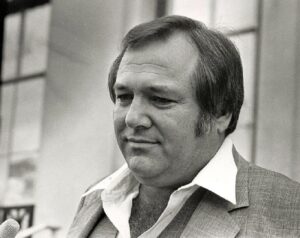
Barry Seal was a drug-running TWA pilot out of Mena, Arkansas. The scuttlebutt was that car mechanic Johnny Lawhorn Jr. found a check made out to Bill Clinton in the trunk of Seal’s car.
Barry Seal was a danger-loving pilot and the best-known cocaine smuggler of the 1980s. He was murdered in Baton Rouge, Louisiana, in 1986, by three men with machine guns who were later arrested and convicted. They were Colombians and authorities say they were connected with the Medellin drug cartel.
The Attorney General of Louisiana told U.S. Attorney General Ed Meese in 1986 that Seal smuggled $3 to $5 billion worth of drugs into the U.S.
In 1981, Seal began running his smuggling operation out of a highly guarded and secret airport in Mena, Arkansas.
There have been questions of whether Bill Clinton, who was governor of Arkansas at the time, may have looked the other way if he knew about the drug smuggling operation, but there has not been proof of that.
A journalist has received first-hand information from friends of Barry Seal. According to them, the name that keeps popping up as a key to what happened is Federal Judge Frank Polozola.
Berta Caceres

Caceres was a human rights activist from Honduras who was murdered in her home in La Esperanza. Reportedly, she had named Hillary Clinton as responsible for the Honduran coup which toppled democratically elected President Manuel Zelaya.
Since the coup, Honduras has become one of the most violent places in the world. As WhatReallyHappened points out, growing awareness of Hillary’s role in Honduras became a serious liability during her 2016 campaign.
Johnny Lawhorn, Jr.
Johnny Lawhorn, Jr. died on March 31, 1998. Lawhorn owned a transmission repair shop and found a check made out to Bill Clinton in the trunk of Barry Seal’s car left at his repair shop. He was found dead after his car had hit a utility pole.
Stanley Huggins
Stanley Huggins investigated Madison Guaranty, the financial institution operated by Jim McDougal and Susan McDougal which failed in the late 1980s.
Here is the rough sketch of the Madison Guaranty debacle:
Jim McDougal was convicted of 18 felony counts of fraud conspiracy charges. The counts had to do with bad loans made by Madison S&L. This S&L was partnered with Whitewater Development Corporation, the subject of Whitewater probe, and owned, in part, by Bill and Hillary Clinton.
Madison Guaranty and McDougal hired Rose Law Firm, where the Mrs. Clinton worked, as a defense attorney. Mrs. Clinton’s Rose Law Firm billing records on Madison Guaranty and McDougal’s Castle Grande project that Hillary called IDC – Industrial Development Corporation. How much work she actually did on Madison and Castle Grande was the subject of the missing billing records.
Stanley Huggins died when his plane crashed, but the NTSB never released the crash investigation report.
Herschel Friday
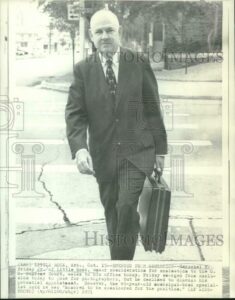
Herschel H. Friday (February 10, 1922 – March 1, 1994) was an Arkansas bond lawyer whom President Richard Nixon considered appointing to the United States Supreme Court. Friday owned an Arkansas law firm, Friday, Eldredge & Clark, LLP, one of the oldest, largest, and long-standing law firms in the state.
Friday, an Attorney and Clinton fundraiser died March 1, 1994, when his plane exploded.
Kevin Ives and Don Henry
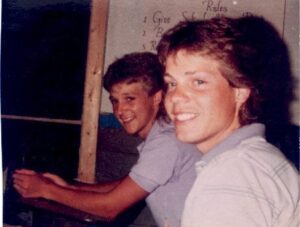
Don Henry and Kevin Ives are better known as “The boys on the track.” Joseph Farah recounts the story:
Unless you read the inside pages of the Arkansas Democrat Gazette (not one of my favorite pastimes), you probably missed what may be a significant development in what has become known in Clinton scandal parlance as the “boys on the tracks case.”
For those not familiar with the background, the story begins on August 22 when teen-agers Kevin Ives and Don Henry went out to a secluded area of Saline County, Arkansas, for a night of deer hunting. Early the next morning, a northbound Union Pacific train ran over their bodies as they lie sprawled on the tracks.
Arkansas State Medical Examiner Fahmy Malak, appointed by Gov. Bill Clinton, quickly ruled the boys’ deaths “accidental,” saying they were unconscious or in a deep sleep as a result of smoking marijuana. That explanation didn’t add up to Kevin’s mother, Linda, who publicly challenged the finding. A local grand jury began investigating, resulting in the bodies being exhumed.
Another autopsy revealed that Don Henry had been stabbed in the back and that Kevin Ives had been beaten with a rifle butt. In other words, the kids had been murdered — murdered in an area known as a drop zone for drug smugglers.
Under public pressure over the official mishandling of the case from the beginning, Gov. Clinton called in two pathologists from out of state to review the work of the medical examiner and state crime lab where the autopsies were conducted. But when the Saline County grand jury tried to subpoena those experts for testimony, Clinton refused to allow it.
Mara Leveritt made the case famous with her 1999 book, The Boys on the Tracks: Death, Denial, and a Mother’s Crusade to Bring Her Son’s Killers to Justice.
The Boys on the Tracks is the story of a parent’s worst nightmare, a quiet woman’s confrontation with a world of murder, drugs, and corruption, where legitimate authority is mocked and the public trust is trampled. It is an intensely personal story and a story of national importance. It is a tale of multiple murders and of justice repeatedly denied.
The death of a child is bad enough. To learn that the child was murdered is worse. But few tragedies compare with the story of Linda Ives, whose teenage son and his friend were found mysteriously run over by a train.
In the months that followed, Ives’s world darkened even more as she gradually came to understand that the very officials she turned to for help could not, or would not, solve the murders. The story of betrayal begins locally but quickly expands.
Exposing a web of silence and complicity in which drugs, politics, and murder converge, The Boys on the Tracks is a horrifying story from first page to last, and its most frightening aspect is that all of the story is true.
The phrase that nags at me being, “Clinton refused to allow it.” And the subsequent question: why?
The Following Persons Had Information On the Ives/Henry Case
- Keith Coney died when his motorcycle slammed into the back of a truck in July of 1988.
- Keith McMaskle died in November of 1988 after being stabbed 113 times.
- Gregory Collins died from a gunshot wound in January of 1989.
- Jeff Rhodes was shot, mutilated, and burned in a trash dumpster. His body was found in April of 1989.
- James Milan was found decapitated, however, the Coroner ruled his death was due to “natural causes.”
- Richard Winters was killed in a set-up robbery in July of 1989.
Keith Coney
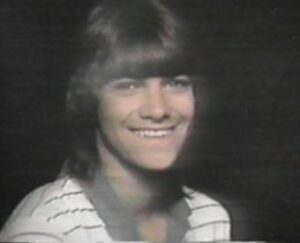
Keith Coney died on May 17, 1988. Coney asserted he had inside information concerning the Henry/Ives “Boys on the Track” case. In the news at the time, Keith’s mother, Betty Alexander, said her son knew the teenagers and related to her he had been nearby when Henry and Ives were attacked.
Coney died when his motorcycle slammed into the back of a truck during a reported high-speed chase.
Keith McKaskle

Keith McKaskle made no secret that he feared for his life, because he also had information about the Don Henry and Kevin Ives “Boys on the Track” murder case. Kevin Ives’ mother, Linda, testified that Keith bid his friends and family good-bye shortly before his murder.
Local reports at the time:
The night of elections in 1988, he took two pennies out of his pocket and threw them on the bar there at the Wagon Wheel and said “If Jim Steed (Saline County Sheriff) loses this election, my life isn’t worth two cents,” and he was murdered by stabbing that night – 113 stab wounds.
McKaskle died on November 10, 1988. COD 113 stab wounds. Pretty safe to say that was no suicide or accident.
Gregory Collins

Gregory Collins was another who allegedly had knowledge of the circumstances surrounding the murders of Arkansas teenagers, Don Henry and Kevin Ives. Collins died from a gunshot wound in January 1989.
Seth Conrad Rich
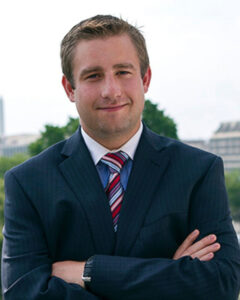
Rich, who was the Operations Director for Voter Expansion for the DNC, was found murdered on July 10.
His death initially appeared like a robbery gone wrong but his mother Mary Rich claims that nothing was taken from her son, who was found with two shots in his back.
The mystery surrounding his death has sparked a flurry of theories posted online, including claims that he was on his way to speak to the FBI when he was shot.
Michael Hastings

The journalist for Rolling Stone magazine died in a highly suspicious, single-car accident on June 18, 2013. Apparently, he had told friends that he was afraid for his life following stories he had written which were critical of Secretary of State Hillary Clinton.
One of the emails leaked during the 2016 Democratic Convention confirmed that Hillary had received Hastings’ damning investigative report of the attack on the Benghazi consulate 5 months before his death.
Gareth Williams

The transatlantic MI6 spy was found dead – naked, padlocked, and stuffed in a 32-inch x 19-inch duffel bag – in his London bathtub. Williams has been credited with illegal hacking secret data on Bill Clinton, according to the U.K. Sun. It is noted that “[H]is death is still one of Britain’s most mysterious unsolved cases.”
Officials deem his death to be a suicide, but there were no palm prints on the edge of his bathtub, and his DNA was not found on the lock. Additionally, all messages left by Williams on the voicemails of his friends and family were deleted in the days following his death.
It is believed that a rival agent may have broken into the flat to destroy or remove evidence. There were no signs of forced entry into the apartment, according to The Sun.
The news source reported:
“In 2012, lawyers for his family said he could have been killed by someone who specialized in the ‘dark arts of the secret services. The police did not rule out his intelligence work playing a part in his death. They thought he may have been stuffed in the bag by killers who later broke back in to cover their tracks. Investigators also suspect the flat had been ‘steam-cleaned,’ which would explain why no DNA evidence was found.”
Charles Ruff
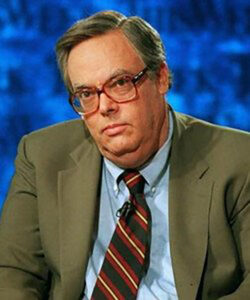
The influential Washington, D.C., lawyer reportedly died “after an accident at his Washington home” on Nov. 20, 2000. One report said he was found unconscious outside his shower. Other reports indicated he had a heart attack.
Ruff, 61, had defended Clinton during his Monica Lewinsky scandal and impeachment trial.
The London Guardian reported:
Ruff’s initial involvement with the Clinton White House came from defending one of Hillary Clinton’s principal assistants, Ira Magaziner, who helped to prepare her ill-fated healthcare plan. Magaziner was accused of perjury, but in a complex presentation to the US attorney’s office in Washington, Ruff managed to shift the blame to some unspecified White House officials and Magaziner was never charged.
It was against this background that Ruff became President Clinton’s fifth White House counsel within four years. As the ripples of the Whitewater affair widened and allegations about the president’s sexual behaviour proliferated, insiders joked that Clinton needed a lawyer smart enough to do the job and dumb enough to take it. Ruff defended his recruitment with the comment: “When the president of the United States asks you to do something, you don’t say, ‘Let me think about it.’ You say, ‘How can I help you, Mr President?’”
Carlos Ghigliotti

Ghigliotti was a key figure in the Waco congressional investigation. On April 18th, his body was found badly decomposed in his home outside Washington, D.C. There was no evidence of forced entry into his home, but his body was found sitting at his desk in Laurel, Maryland.
The 42-year-old activist was a respected expert in the field of thermal imaging. Reportedly, he had been retained by the House Government Reform Committee to analyze surveillance film footage taken by means of Forward-Looking Infrared (or FLIR) during the siege and final inferno of Mt. Carmel, the Branch Davidians complex near Waco, Texas.
The film, captured by an FBI aircraft circling two miles above the site, was critical to the case. Debate had raged for years about claims that on April 19, 1993, government agents fired automatic weapons upon Davidians trying to escape as flames swallowed their homes. In result, seventeen children and 62 adults were killed.
It is relayed the Ghigliotti had uncovered additional evidence contradicting government protests of innocence, which is why, many believe, he was murdered. Ghigliotti’s friend, attorney David T. Hardy, told WND, “I think he may have known too much. Carlos told me he had discovered things that were much, much worse than anything that had come out yet.”
Tony Moser
The anti-corruption journalist was a critic of the Arkansas Democratic Party political machine and was killed as he crossed a street in Pine Bluff on June 10, 2000.
This occurred 10 days after being named a columnist for the Democrat-Gazette newspaper and two days after writing an article, which exposed the looting of programs designed to obtain money from “deadbeat” parents to then give to their children.
Charles Wilbourne Miller
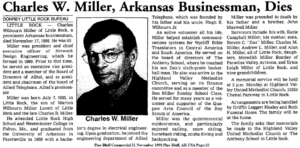
On Nov. 17, 1998 Miller, the vice president and board member for Alltel (the company that created the White House’s “Big Brother” computer system) was found dead at his ranch in Little Rock, Arkansas. A medical examiner concluded his death was a “suicide” because a .410 gauge shotgun was found near Miller’s body and a Ruger .357-caliber revolver discovered in some water.
Investigators believe the Ruger was the weapon Miller used to kill himself. However, why had two rounds in the handgun already been spent? It doesn’t make sense that a suicide victim used two bullets to kill himself.
Alltel was the successor to Jackson Stephens’ Systematics, the company that provided the software for the White House’s “Big Brother” database behind the Clinton administration’s plan to develop the secret computer “Clipper” chip to bug every phone, fax and email transmission in America.
There was at least one other high-profile “suicide” among the inner circle involved with the project – Vince Foster (more details below).
Daniel Dutko
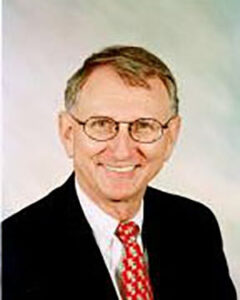
The 54-year-old co-chairman of the Democratic National Committee fundraising effort, Leadership 2000, reportedly died from head injuries in a mountain biking accident in Aspen. According to authorities, on July 27, 1999, he was not wearing a helmet and hit his head on the pavement twice.
His death is curious because he was in Aspen to attend a fundraiser attended by President Clinton. Sources relay that in 1995, Dutko had been vice chairman of finance for the Clinton-Gore campaign. Dutko had also served as vice chairman of finance for the DNC in 1996, when thousands of dollars were reportedly funneled from a Chinese military officer to Bill’s re-election campaign.
That same year, the Clinton administration also reversed a State Department policy that categorized satellites as “munitions,” making it easier for China to launch American satellites and even acquire sensitive technology.
David J. McCloud
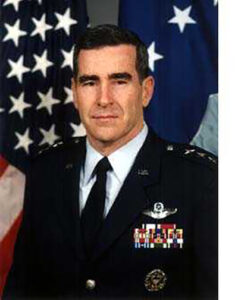
During a portion of Clinton’s presidency (from May 1996 to December 1997), General McCloud served as the director for the Joint Chiefs of Staff Force Structure, Resources and Assessment Directorate, or J-8, from May 1996 to December 1997. Later, he became the commander of Alaskan Command and 11th Air Force.
While piloting his personal YAK-54 on July 26, 1998, a Russian-built, single-engine acrobatic aircraft, McCloud was killed in a crash. The cause of the tragedy is unknown.
A few unsubstantiated – though curious – claims have been published on blogs. It is believed that McCloud was part of a group of 24 flag officers that sought to arrest Clinton for treason under the Uniform Code of Military Justice while he was president.
Don Adams
Don Adams was a lawyer in Arkansas who got involved trying to help the people who were being swindled out of their life savings. The successor attorney for Don left for parts unknown, about a year after, on January 7, 1997 Don was killed.
Eric Butera
Butera was an informant who had information about the murder of Mary Mahoney (above). Reportedly, he was told to help police with an undercover drug buy on Dec. 4, 1997, during which he was beaten to death.
Gordon Matteson

Matteson was a Clinton associate who was found shot in the head on May 15, 1997. Authorities declared it a suicide, but skeptics aren’t so sure.
John Hillyer
Hillyer was a cameraman for NBC and had been working on an investigation of a drug-smuggling operation in Mena, Arkansas. This took place around the same time Clinton was governor. Hillyer is also credited with helping create a 30-minute video called “Circle of Power” and “The Clinton Chronicles.”
It was “The Clinton Chronicles” that seems to have gotten Hillyer murdered. After he began working on the project with Pat Matrisciana in 1990, they started unearthing serious criminality.
Says Pat:
“It was like going into some sort of banana republic that was run by a dictatorship. We were followed on a regular basis.”
Matrisciana set up a “safe house” in an apartment complex in Little Rock where he and other journalists and investigators would meet to discuss stories of drug trafficking in Mena, the murder of two teenage boys there and whether or not Bill Clinton was involved in any of those activities.
Hillyer and Matrisciana soon became friends with Gary Parks, the son of Jerry Luther Parks, a former security chief of Clinton’s presidential campaign (See “Jerry Luther Parks” entry). It is relayed that Parks had been hired several years prior by Vince Foster on behalf of Hillary Clinton to put Bill Clinton under constant surveillance. Gary would go on stakeouts with his father as Jerry gathered photographic evidence of Clinton visiting with prostitutes, Gennifer Flowers, and other young women.
When Vince Foster’s body was found in Fort Marcy Park (see “Vince Foster” entry), Jerry became paranoid that he might also be targeted for murder. He was right. When Jerry was assassinated in his car in September 1993, Gary and Jerry’s widow believed it was related to his surveillance of Clinton.
Gary Parks regularly stayed at the safe house, but was awakened one night when the door was kicked open by would-be assassins. When he quickly loaded his M-1 carbine, the sound of the bullet being chambered scared off the killers and they fled into the parking lot. Gary went to the window and thought he recognized one of the men as a member of the Gov. Clinton’s security staff.
On another occasion, when Matrisciana and others were preparing for a radio talk show at the safe house, an investigator scanned the apartment for “bugs” and discovered eight of them.
During the course of their investigation, Matrisciana and Hillyer discovered a trail of unsolved murders of people who knew details about the teens’ deaths. Others who died mysteriously had inside information on drug ties to the political establishment in Arkansas. On one occasion, Hillyer was planning to conduct an interview with a former official of the Democratic National Committee, but the man never showed up for the interview. Hillyer learned the next day that the man, C. Victor Raiser II, and his son, Montgomery Raiser, had died in a plane crash. (See “C. Victor Raiser II and Montgomery Raiser” entry.)
Matrisciana and Hillyer were also going to interview a hermit who lived in the mountains near where the teens had been killed. Two days before the scheduled interview, the hermit died.
Hillyer started to fear for his own life, telling Matrisciana that he thought they would kill him by making it look like he had a heart attack. After the film was completed, Hillyer went on to other projects and ended up living in Atlanta. In 1996, Matrisciana received a phone call from Hillyer. John told him he had uncovered new information that needed to be put on video, but that they couldn’t talk on an unsecured phone. They planned on meeting to discuss the new information, but Hillyer died of a heart attack three days later.
Did someone get to Hillyer? Matrisciana doesn’t know. Were the hermit and DNC official killed for what they knew? Or were these simply coincidences? Again, Matriciana said he doesn’t know, but he did think the deaths were unusual, considering the number of other people who have died under mysterious circumstances in Arkansas.
The Following Clinton Bodyguards Are Also Dead
Major William S. Barkley, Jr.
Died: May 19, 1993
Age: 27
Reason: Died in a VH-60N Blackhawk helicopter crash

Major Barkley, 27, of Hickory, N.C. became a naval aviator in 1977 and was assigned to the presidential squadron in January 1990. He was one of only eight pilots in the squadron authorized to fly the president, according to Betty Jo Bragg, long-time secretary to Barkley’s father.
Staff Sergeant Brian Haney
Died: May 19, 1993
Age: 32
Reason: Died in a VH-60N Blackhawk helicopter crash

Staff Sgt. Brian D. Haney, 32, of North Ridgeville, Ohio, was the quality assurance representative on the helicopter. Carolyn Haney, his mother, said her son had flown with President George Bush to Europe and in the presidential campaign “all over the United States.”
Captain Scott J . Reynolds
Died: May 19, 1993
Age: 33
Reason: Died in a VH-60N Blackhawk helicopter crash
Capt. Scott J. Reynolds, 33, of Wausau, Wis., joined the Marines in 1984, was designated a naval aviator in 1987 and was a veteran of the Persian Gulf War.
Sergeant Tim Sabel
Died: May 19, 1993
Age: 33
Reason: Died in a VH-60N Blackhawk helicopter crash
Sgt. Timothy D. Sabel, 27, of Ripon, was “responsible for the maintenance of the air-plane He goes on all flights,” said Master Sgt. Paul Earle, a Marine spokesman at Quantico, Virginia (which is also FBI headquarters).
Steven D. Willis
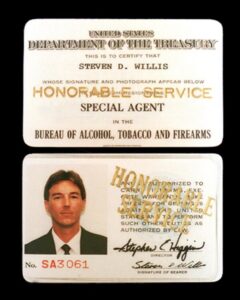
Houston, TX
Robert J. Williams
Little Rock, Arkansas
Conway C. LeBleu
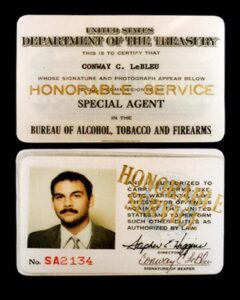
New Orleans, Lousiana
Todd W. McKeehan
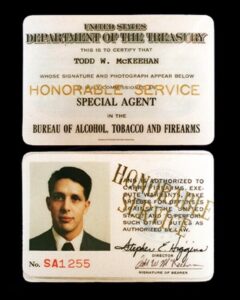
New Orleans, Lousiana
Major General Jarrett J. Robertson

The deputy commanding general of V Corps, died when an Army UH-60 Blackhawk helicopter crashed as it attempted to land at Wiesbaden air base February 23, 1993. V Corps is an armoured force head quartered in nearby Frankfurt, and is the U.S. Army’s chief combat component in Europe which currently has troops in Somalia and a medical unit in Croatia. Also killed were Col. William J. Densberger, 47, the corps’ chief of operations and plans; Col. Robert J. Kelly, 48, its chief of intelligence; and Spec. Gary L. Rhodes, 23, the helicopter crew chief. The officers were returning from a meeting at the U.S. European Command headquarters in Stuttgart when their Blackhawk fell suddenly to the ground not far from the Wiesbaden air base’s control tower and burst into flames.
On March 2, 1993, Rear Adm. L.E. Allen Jr. relieved Rear Adm. Frederick L. Lewis as commanding officer of Carrier Group 4 and Commander Carrier Striking Force on March 2, 1993, in Norfolk, Va. (which includes the USS Roosevelt). Allen was formerly stationed in Washington, D.C., where he served as deputy director for operations on the Joint Chiefs of Staff. Lewis was reassigned to a land job as commander of Naval Doctrine Command, which later became operational on March 12.
Colonel Robert J. Kelly
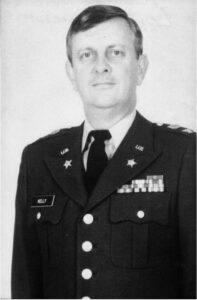
Colonel William J. Densberger
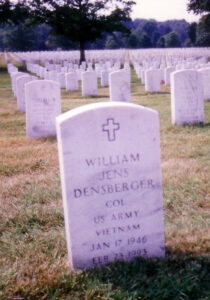
Specialist Gary L. Rhodes, Jr.

- https://theblacksphere.net/2015/04/47-bodies-left-in-the-wake-of-hillary-clinton-part-i/
- https://theblacksphere.net/2015/04/47-bodies-left-wake-hillary-clinton-part-2/
- https://theblacksphere.net/2014/02/47-bodies-left-wake-hillary-clinton-part-3/
- https://www.wnd.com/2016/08/clinton-death-list-33-most-intriguing-cases/
- https://www.trueactivist.com/50-instances-anti-clinton-activists-were-found-dead-under-mysterious-circumstances/
- https://scvnews.com/dont-cross-the-clintons-commentary-by-joe-messina/
- https://buffalochronicle.com/2019/08/14/clinton-role-suspected-in-47-deaths-but-authorities-dont-investigate/
- https://www.dailymail.co.uk/news/article-3754655/Google-buries-Clinton-body-count-Search-engine-accused-hiding-negative-stories-Hillary-s-campaign.html
- https://twitter.com/i/events/1002950243338653697
- Child Rapist and Ex-Rockstar Ian Watkins Has Been Cleansed from Society - October 13, 2025
- Was the Shooting of Charlie Kirk a False Flag Operation? - September 30, 2025
- MGTOW Is Ruining Young Men’s Lives - September 28, 2025






